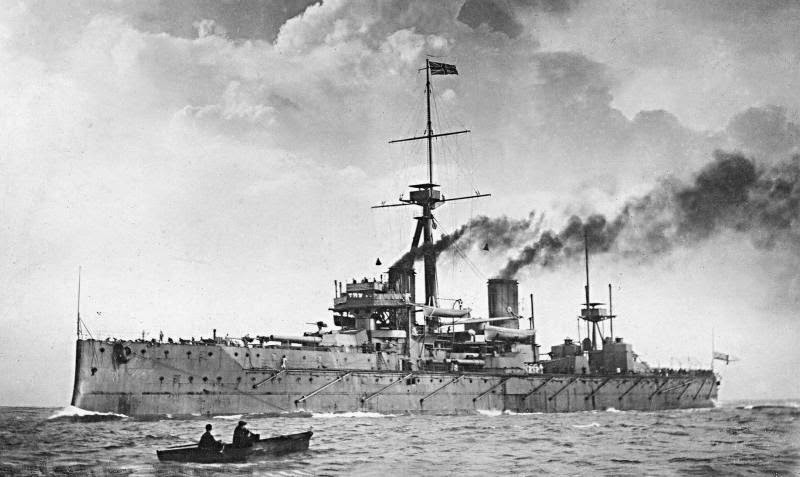The expected Hollywood movies never materialised and so her only screen appearance this century has been in a 2003 TV production staring Riversong, a mixture of "Braveheart, I Claudius and Carry On Somebody" according to the guy who wrote it.
However she still seems fairly popular and has displays dedicated to her in the museums of Norwich, Colchester and London. Seeing as how she burned the last two to the ground that's a bit bizarre, a bit like having a Herman Goring museum in Coventry.
But how much do we really know about her?
1. Did she really exist?
 |
| Neo-classical Boudica by John Opie |
We know the story of Boudica mainly from two Roman historians; Tacitus and Dio Cassius. As the enemy you would have to wonder exactly how much they would know. Do we know who leads the insurgency in Afghanistan, for example, or who led it in Iraq? Not really.
Neither historian was around at the time either, although as Tactitus's father-in-law was later a Governor of Britannia he had a more direct connection with events.
However the main point of suspicion is her name, which translates as 'Victory' in ancient Celtic. A tad convenient really, a bit like a Bishop being called Cardinal Sin - who is a late Archbishop of Manila actually.
Another possibility is that she did exist but the Romans got her name wrong, rather like the mountains and rivers around the world that appear on European maps with names that translate as 'mountain' or 'river' in the local lingo.
Maybe someone asked "Who won that victory over the Romans in 60CE" and the oppressed peasant, looking at the devastation and contemplating the Roman yoke now back upon his shoulders replied in Celtic, "Victory?"
2. Why do we still remember her?
 |
| Realistic Boudica, Norwich Museum |
Firstly she is a Briton, a Celt, and English historians have a long and ignoble history of doing down the Celts. Owain Glendower is only remembered in England as a superstitious windbag in Henry IV Part One, and until Mel Gibson donned a skirt nobody south of the border had heard of William Wallace.
Secondly she fought against the Romans. In England we loved Rome so much we built an Empire in her image, and well educated young men went out to govern large chunks of Africa knowing more about Caesar's Gallic wars than the north of England.
She became famous, it seems, simply by the luck that modern historians rediscovered her about the time of the Armada, when the idea of a plucky Queen standing up a foreign invader seemed very prescient. Two and a half centuries later the story of an indigenous freedom fighter battling the world's greatest empire my have been a bit less welcome, but fortunately the then monarch shared a name with her and so the Victorians too learned to love Boudica.
3. Was she a Queen?
 |
| Male fantasy Boudica (Rhaegar Targaryen) |
The Roman historians agree she was royal, but fail to explain why she did not become leader of the tribe when her husband, King Prasutagos, died. Maybe this was a Iceni tradition, maybe it was Roman sexism, or maybe she was disinherited as her anti-Roman feelings were already well know. We don't know.
However, it is very likely that as the wife of a client king she would have been a Roman Citizen, which may well be the point of Tacitus telling us the story of her flogging by the Roman Governor Suetonius's men.
Roman readers would expect a bit of brutality towards painted Brittunculi, but Roman Citizens were expect to be treated with a bit of respect.
4. Did she ride a chariot in battle?
| Victorian Boudica |
Certainly there were war chariots in earlier times, and Caesar reports meeting then in battle in 55BCE. Definitely the Iceni were into their horses, and we have coins and other evidence of plenty of horsiculture, but nothing suggesting chariots.
By the first century CE chariots had disappeared from the battlefield and been replaced by cavalry. True, Tacitus described his father-in-law meeting some in Scotland a couple of decades later, but this story appears to have been nicked from Caesar.
They were still used as executive limos and racing machines, but to depict Boudica leading her warriors into battle in one in 60CE would be a bit like showing General Slim fighting the Japanese in Burma in 1945 astride an elephant, although to confuse matters Slim did have elephants in his army, but he only used them to carry his supplies.
If she did ride a chariot though it certainly didn't have scythes on the wheels. Scythed chariots were an unsuccessful attempt to invent the unguided missile from the time of Alexander the Great and had been given up as a dead loss centuries before the Romans invaded Britain.
5. Was there a Druid conspiracy?
 |
| Essex girl Boudicca, Colchester Town Hall |
Indeed, the famous passage about the Druids "pouring forth dreadful imprecations" at the attacking Romans is on the page of Tacitus right before he describes the revolt of the Iceni.
So was this just opportunism, or were the Druids involved in fermenting the uprising?
A previous attempt to invade Angelsey had had to be called off after the Brigantes revolted, so there was a bit of a pattern here. Maybe what inspired the Iceni to revolt was not the maltreatment of their queen, but the murder of their priests?
However it could equally be a case of an opportunity too good to miss. The Easter Uprising in Ireland didn't take place because the Irish supported a unification of Europe under Germany in 1916 (although they appear to have changed their minds on that now) but simply because the British Army was bogged down on the Somme. However just to confuse things the Germans did send the Irish weapons.
If the plan was for a distraction to save Mona it may have succeeded. Although Tacitus has Suetonius demolishing the Druid's groves before marching back to deal with Boudica, he also tells us that in 77CE the Romans had to invade again to finish them off. So maybe she was not such a failure after all.
6. Did the Britons commit atrocities?
 |
| Boudica by Chris Rawlins |
Dio (the historian, not the late Rock God) was a classical Greek who regarded everyone north of the Rhine as a bit suspect and also a misogynist who regarded a women ruler as an offence against nature, so account has to be taken with a pinch of salt.
The archaeology shows Colchester was thoroughly looted before being burnt to the ground. Very few bodies have been found, but then the main place to look for them, the Temple of Claudius where the citizens made a last stand, was cleared in Medieval times when the Castle was built, so maybe we'll never know.
On the other hand it should be noted that there is evidence of a Roman scorched earth policy in retaliation, with the major settlement of Thetford being erased from the map.
7. Did she burn St Albans?
 |
| Avenging Boudica by Peter Frost |
Excavations at Silchester are not complete, but there is starting to emerge evidence of possible Boudica-era fire. It could be then that Tacitus made a mistake. Having been told that Boudica trashed the three largest town in the country, he may have failed to account for St Albans overtaking Silchester in size in the intervening years.
8. Why did the II Legion not march?
 |
| Boudica by Gordon Napier |
It is recorded that the legion was then under the command Poenius Postumus, the praefectus castrorum and for his 'cowardice' he committed suicide and Poenius became postumous.
Praefectus castrorum translates as 'camp commandant' and he would usually have been third in command. Where his superior officers were we don't know, but possibly they were on Suetonius's staff up in Anglesey.
The praefectus castrorum was different to the Legates who commanded the legions as he would be a soldier who had risen from the ranks and not an aristocrat. As the senior non-commissioned officer in the Legion, the praefectus castrorum would be the equivalent of a Regimental Sergeant Major in the British Army.
Now anyone who has met one of these characters in real life - and one used to run a pub near me - will know that they are usually a lot of things, but not scared of a fight. It's possible to imagine a bluff praefectus castrorum failing to grasp the bigger picture, but not really of shunning battle because he'd filled his pants.
Might there have been something else going on in the south-west that stopped the legion marching?
History can't help, but archaeology may give a clue in the form of a pile of bodies by the gate of Cadbury Castle in Somerset. Dated to the first century CE, could they be the result of an uprising coinciding with Boudica's, one which stopped the Legio II marching east?
 |
| Boudica Warrior Princess |
Somewhere on A5 between Wales and London is the answer. Tacitus gives us some geographic clues, but when they were fed into a computer it gave 263 possible locations. Maybe one day someone with a metal detector will get lucky and find it, in the same way the site of the Battle of the Teutoberg Forest was found in the 1980s, but until then we're just guessing.
10. Did she survive her last battle?
Tacitus tells us that, defeated in battle, Boudica commits suicide, thus giving a neat ending to his story. Cassius Dio meanwhile has Boudica survive only to expire from illness whilst planning further resistance. Tacitus is usually considered the more reliable source, but the archaeology seems to support Dio.
 |
| Maturnal Boudica, Cardiff City Hall |
Were the Britons still led by Boudica though? Again, you'd have to ask how would the Romans know. A thousand years later Harold II died at Hastings and we're still not sure exactly how, so it's possible both Tacitus and Dio are wrong.
Whoever was leading the Brits though, they appear to have continued to put up a struggle and apparently Nero considered abandoning the province altogether.
The moral of the story then is - don't mess with a Norfolk broad.
Sources;
Professor Miranda Aldhouse-Green Boudicca Britannia
Dr Birgitta Hoffman (Lecture to Glossop Guild)



.jpg)
%2Bprom%2Be%2Bvers%2B(c)%2Bnational%2Bmuseum%2Bof%2Bthe%2Broyal%2Bnavy.jpg)



